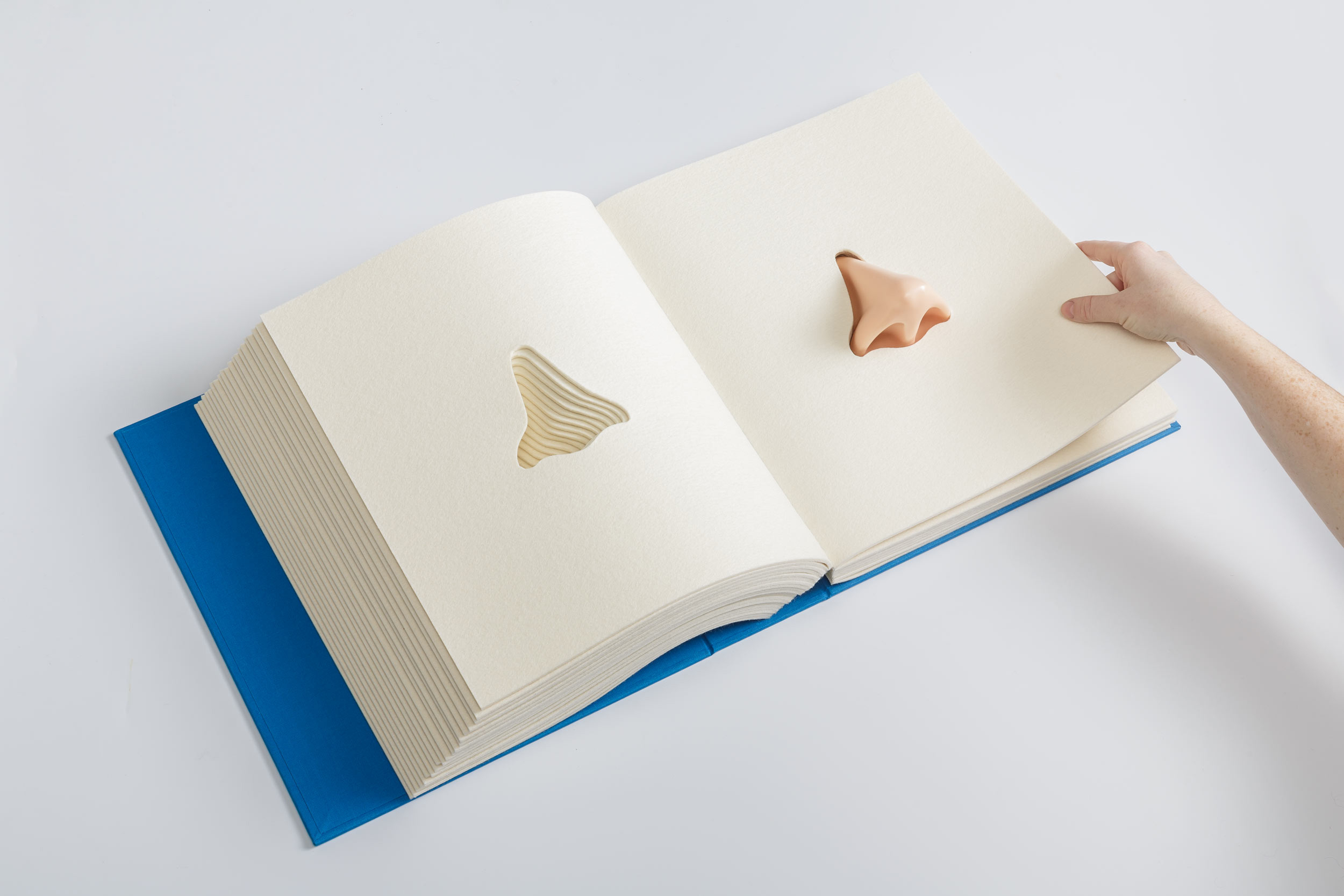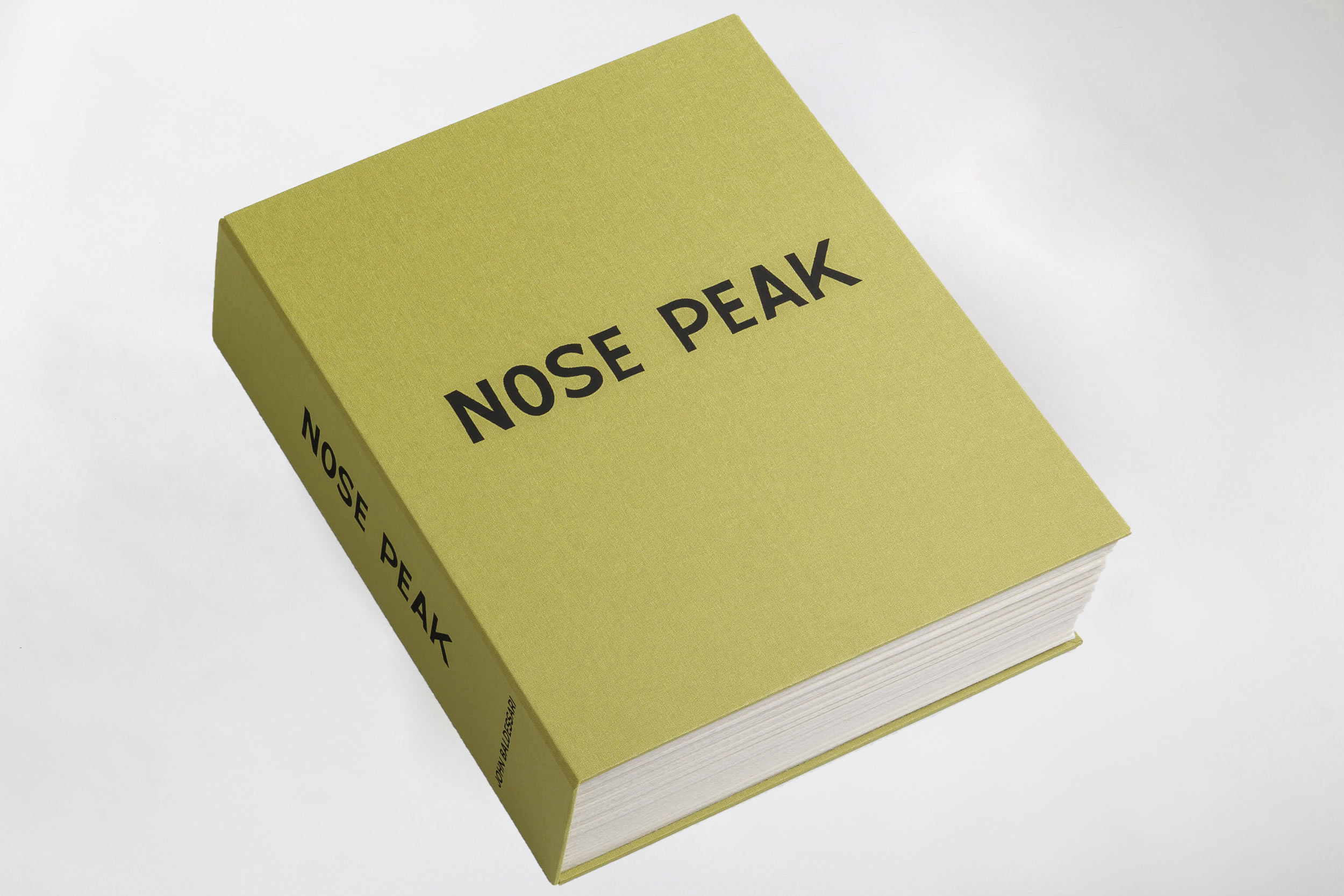2015
12 copies
Signed and numbered
12 copies
Signed and numbered
38×31,5×10 cm
14.96×12.40×3.93 in.
14.96×12.40×3.93 in.
56 pages
Wool felt, resin
Silkscreened cover
Wool felt, resin
Silkscreened cover



















Ever since the artwork "God Nose" in 1965, John Baldessari (1931-2020) has displayed a fascination with noses. Although the artist has long obscured faces with colored dots, the appearance of this facial feature in various forms, whether alone or accompanied by a pair of ears, is not merely coincidental.
Within Baldessari's body of work, we encounter a range of themes and their symbolic meanings, encompassing the celebration of senses, the exploration of identity and its complexities, and a clear influence from Magritte. These elements have informed and shaped his artistic expression.
The artwork titled "Nose Peak," created by John Baldessari and published by Three Star Books, evokes the concept of a smuggler's Bible or clandestinely concealed objects, such as jewelry or spirits. This hyperrealistic nose, meticulously sculpted in the manner of a dedicated scholar, draws inspiration from various death masks of Gogol. Encased within a magnificent volume with the allure of a reliquary, this book prompts diverse interpretations. It can be seen as an homage from Baldessari to himself, as he conceals his own identity behind Gogol's real or fake nose, or as a tribute to Gogol himself. In both cases, the artwork reflects the artist's preoccupations and obsessions. Opening the sound-dampened, wordless pages of such a book leads the reader on a journey of multiple perspectives, exploring the enigmatic "Nose Peak."
In a tribute to Gogol, writer Vladimir Nabokov once quoted a Russian saying, "the man with the longest nose sees further," further adding that "Gogol saw with his nostrils." With "Nose Peak," John Baldessari invites us to sharpen our senses and perceive the world more intensely. Through his enduring fascination with noses, Baldessari prompts us to contemplate the nuances of perception, identity, and the intricate connections between the senses.
Within Baldessari's body of work, we encounter a range of themes and their symbolic meanings, encompassing the celebration of senses, the exploration of identity and its complexities, and a clear influence from Magritte. These elements have informed and shaped his artistic expression.
The artwork titled "Nose Peak," created by John Baldessari and published by Three Star Books, evokes the concept of a smuggler's Bible or clandestinely concealed objects, such as jewelry or spirits. This hyperrealistic nose, meticulously sculpted in the manner of a dedicated scholar, draws inspiration from various death masks of Gogol. Encased within a magnificent volume with the allure of a reliquary, this book prompts diverse interpretations. It can be seen as an homage from Baldessari to himself, as he conceals his own identity behind Gogol's real or fake nose, or as a tribute to Gogol himself. In both cases, the artwork reflects the artist's preoccupations and obsessions. Opening the sound-dampened, wordless pages of such a book leads the reader on a journey of multiple perspectives, exploring the enigmatic "Nose Peak."
In a tribute to Gogol, writer Vladimir Nabokov once quoted a Russian saying, "the man with the longest nose sees further," further adding that "Gogol saw with his nostrils." With "Nose Peak," John Baldessari invites us to sharpen our senses and perceive the world more intensely. Through his enduring fascination with noses, Baldessari prompts us to contemplate the nuances of perception, identity, and the intricate connections between the senses.


